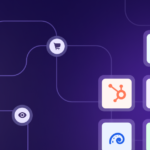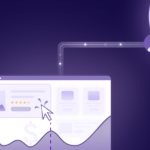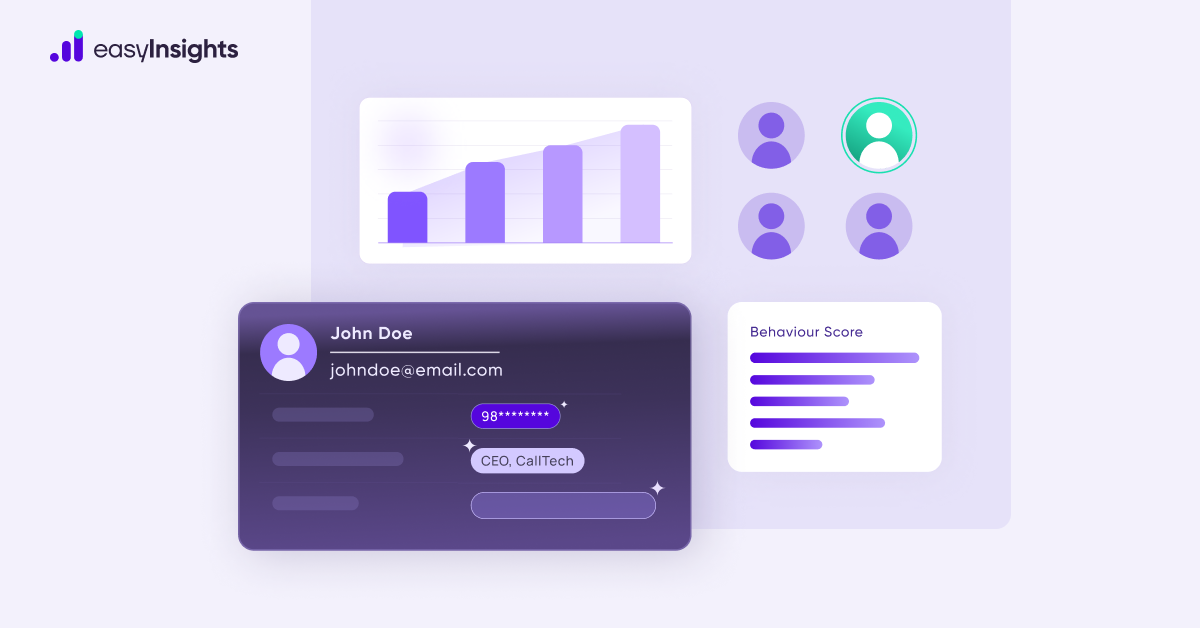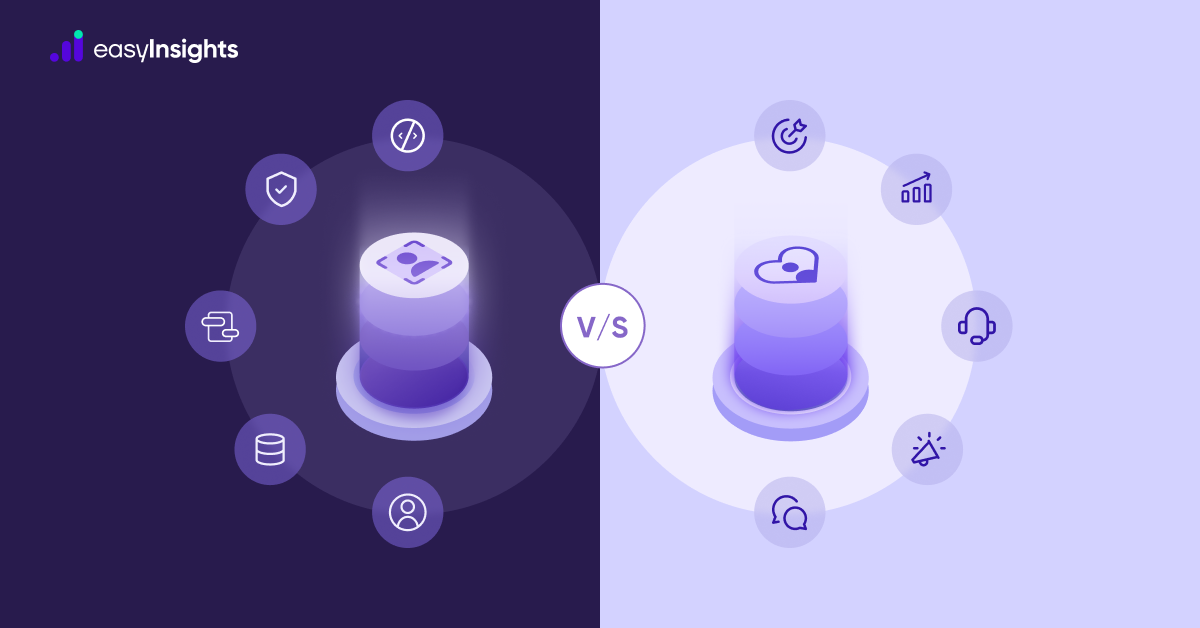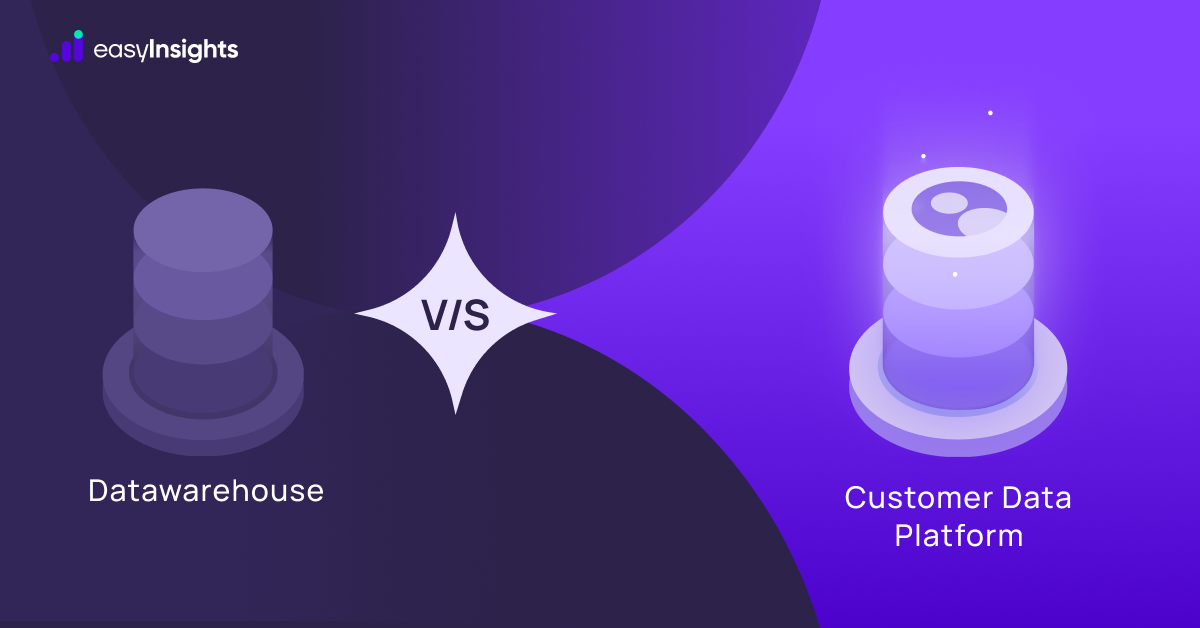
Jump ahead to:
Introduction to Composabale CDPs
Using customer data in B2B businesses presents distinct challenges. They deal with a lot of diverse data from different channels, including offline interactions and tangible products. They do so, while managing a mix of modern and legacy systems. But B2B companies that handle their customer data right, get ahead. It helps them grow, provides them a competitive edge, improves and enriches customer interactions, and makes sure everyone in the company is on the same page.
Traditional Customer Data Platforms (CDPs) work well for online B2C businesses. They help collect, organise, and utilise customer data in things like ads and CRMs. However, not all CDPs are suited to the nuanced demands of contemporary B2B enterprises, particularly those dealing with physical assets.
So, many companies are now turning to cloud data warehouses instead. These warehouses are cost-effective and work as a central repo for data from both online and offline channels. All the while, keeping the data nuances intact. Enterprises seeking to leverage customer data can now forego the separate collection and storage processes of a traditional CDP, opting instead for a Composable CDP that activates data directly from their data warehouse.
In this blog, we’ll talk about the main challenges B2B companies face with managing data and how using a Composable CDP with their existing data warehouse can help them handle these challenges better
Additional Reading : The Relevance of Composable CDPs – Marketer’s POV
Bonus Read: How EasyInsights’ B2B Customers used Composable CDPs to their Advantage
Before we delve into why B2B Companies need Composable CDPs, we would like to highlight how EasyInsights provided value addition to our B2B Customers. We used our Composable CDP capability in various ways like – Custom attribution, optimising ROAS, better lead conversion, data enrichment and so much more. Dig deeper by reading our customer success stories –
- Custom Attribution Modelling: How a B2B company used EasyInsights to increase its revenue by 2.4x at a scale of 2x using custom attribution model – Read More
- Increased Return on Ad Spend (ROAS): How a B2B company company achieved 6x Growth in ROAS at 1.4x scale in 6 months by creating a full funnel visibility of the marketing campaigns – Read More
- Better Conversion Rates: How an EdTech company Boosted its lead to conversion Rates by 200% using EasyInsights’ Lead Scoring and Grading feature – Read More
- Data Enrichment for Personalised, Targetted Marketing: How an EdTech company Boosted its Match Rates by 150% and Driven Personalization using EasyInsights Data Activation & Data Enrichment – Read More
Additional Reading : Choosing the Right Data Activation Platform for your Business
The Challenge : Dealing with Business and Account Entities
B2B companies operate on a different scale than their B2C counterparts. Instead of targetting individual customers, they deal with bigger business accounts or organisations. When a user interacts with a B2B website, it’s not merely seen as an individual action; rather, the B2B company must also ascertain which company the visitor represents, their role within that organisation, and how this interaction fits into their broader sales or account retention strategies.
While identity resolution suffices for many B2C businesses (merging anonymous and known interactions into unified profiles), B2Bs face the additional complexity of entity resolution. They need to connect individual users with their businesses, accounts, households, workspaces, and so on. They have to keep updating profiles, lead scores, sales stages, and other metrics across different tools based on what each user does.

Many traditional CDPs use fixed models for identity resolutions, but these models can’t always be changed to fit each business’s needs. These CDPs usually focus on identifying individual customers and do not support entity resolution (i.e., and don’t help with connecting them to their companies or other relevant details.) Even the CDPs equipped for entity resolution typically rely on fixed models that usually lack the customization required to suit the unique needs of each B2B enterprise.
Plus, traditional CDPs make users upload their data onto their platforms for identity resolution. But for B2B companies, it’s not practical to upload all their data. So, identity resolution often isn’t complete, omitting crucial aspects of user interactions
On the other hand, a data warehouse has comprehensive company information, which helps with entity resolution work that covers everything about user profiles and interactions. This includes things like what products customers buy or where they shop. Companies can fully customise entity resolution models that fit their business objectives, using either SQL or code-free tools.
The Challenge: Diverse Data Sources
B2B companies need a lot of data from different places because their sales processes are complex and involve many relationships. B2B enterprises gather their own first-party data, encompassing digital interactions as well as data from face-to-face engagements and various sales and operational systems.
Nevertheless, they also need to integrate second-party and third-party data to enhance business profiles with additional company details, incorporate employment data to connect individual visitors with their parent companies, and more. Managing and integrating this diverse array of data types is hard.
Additional Reading : How Data Activation Will Transform Performance Marketing In 2024
For example, a company relies on their first-party data as the cornerstone for all their data projects. However, they augment this with third-party sources such as Bombora and G2 for intent data, and Kickfire to enhance client details. This provides them with detailed engagement data, enabling targeted outreach at the right time. Thus, this company successfully executes account-based marketing (ABM) by leveraging these three data tiers—all powered by their data warehouse.
The Company does this kind of marketing by using their data warehouse, which stands out as the sole platform capable of aggregating data from all these sources. In contrast, traditional CDPs often rely on separate data storage systems from the data warehouse and are typically limited to ingesting specific data types, like clicks on a website.

The Challenge: Aligning Data Across Diverse Systems
For B2B companies to thrive, it’s important to make sure that all the different systems used by cross-functional teams work well together, even when dealing with legacy systems that have been in place for decades. Making sure these systems work smoothly is super important for smooth operations and data flow, facilitating informed decision-making and personalised customer experiences.
But this can be really tough for B2B companies because each system they use needs and understands different kinds of data. Stitching together customer data across these systems to create a cohesive customer 360 view can be really hard. Different teams and systems use their own types of data and have their own ways of defining customers:
Different teams and systems in a company look at customers in different ways:
- Support teams focus on individual users, considering attributes like the email address associated with support tickets.
- Sales teams perceive customers at the business level, as the entire entity responsible for making purchases
- Product teams may concentrate on sub-business accounts, such as workspaces, representing discrete units utilising a service.
- Operations teams send out notifications (like Slack alerts) and make financial reports based on diverse data types. They might not rely on traditional things like clicks on a website, but instead, they look at changes in a company’s account status or other dimensions within each customer profile.
Regardless of the customer data solutions adopted by a B2B entity, it’s important that it’s flexible enough to handle all the different types of data each team needs. While some B2B-centric CDPs can do this well, others are stuck with rigid data models and customer definitions. In contrast, the data warehouse provides full configurability, making it a good base for Data Activation across downstream platforms.
Empowering B2B Companies with Composable CDPs
The data warehouse versatility can handle all the diverse data types that B2B companies need. It brings all this data together and organises it into different profiles that show who the customers are and what they do.
With a composable CDP like EasyInsights, companies can easily move data from their warehouse to other systems they use for operations. This way, they can decide exactly which data is routed to each destination for specific use cases, such as account lead scores for sales teams or customer emails for support teams. Combining the warehouse with an activation platform creates a Composable CDP, which gives you the useful features of a traditional CDP but also takes advantage of the warehouse’s flexibility. This means you get all the benefits of a CDP without having to move your data to a separate system.

The Composable CDP is all about being flexible with how you organise your data. This helps B2B companies handle complicated relationships between things like accounts and objects without any trouble. By setting up personalised data structures and connections between different parts of their data, B2B companies can really understand their customers and make informed, data-driven decisions.
Furthermore, the Composable CDP places a premium on data security and compliance, ensuring that sensitive B2B transactions remain safeguarded and compliant with regulatory standards. Unlike traditional CDPs, all the data stays in the company’s own secure warehouse, so there’s no need for extra storage somewhere else.
On top of that, setting up the Composable CDP is quick and easy. It connects the data in the warehouse to other tools in just a few minutes. And its intuitive interface allows for easy addition or change connections whenever needed. This means companies can always have the most up-to-date information as their needs and plans change. With the Composable CDP’s capacity to scale and adapt to future business requirements, B2B enterprises can confidently navigate the evolving landscape and unlock endless possibilities for data-driven success.
B2B Companies – EasyInsights (Composable CDP) Customer Success Stories
- How a B2B company used EasyInsights to increase its revenue by 2.4x at a scale of 2x using custom attribution model – Read More
- How a B2B company company achieved 6x Growth in ROAS at 1.4x scale in 6 months by creating a full funnel visibility of the marketing campaigns – Read More
- How an EdTech company Boosted its lead to conversion Rates by 200% using EasyInsights’ Lead Scoring and Grading feature – Read More
- How an EdTech company Boosted its Match Rates by 150% and Driven Personalization using EasyInsights Data Activation & Data Enrichment – Read More
Additional Reading : Choosing the Right Data Activation Platform for your Business
Wrapping Up
B2B companies face unique challenges in handling customer data, so they need a tailored plan to grow and improve customer experiences. The best solution for managing all the different kinds of data these companies deal with is the data warehouse. Leveraging the data warehouse, the Composable CDP delivers unmatched flexibility, scalability, and data security, empowering B2B enterprises to navigate complex relationships, extract profound customer insights, and optimize operational efficiency.
EasyInsights is a marketing analytics and automation platform that helps you supercharge audience targeting, personalization, and other customer-facing marketing initiatives. This no-code, user-friendly platform allows you to harness the complete power of your customer data while furthering your omnichannel engagement goals from a single platform. EasyInsights helps bridge the gap between data and marketing teams.
Book a demo today to see the tool in action!


